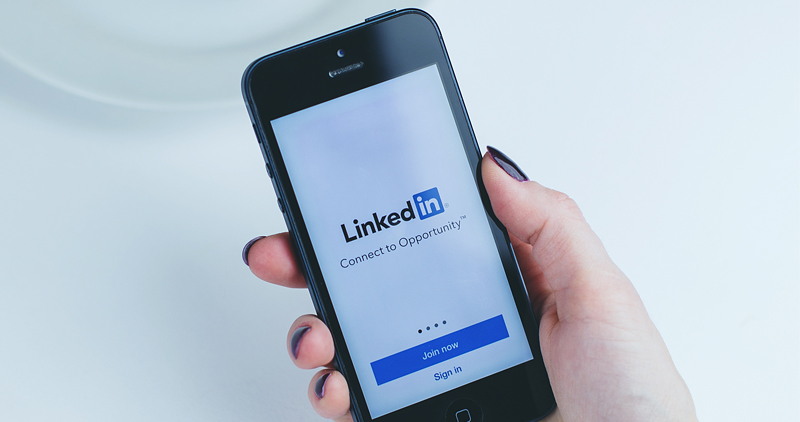How to Write a LinkedIn Profile Summary that Sells
Making A Golden First Impression
The only way to make it as a freelancer is to put yourself and your work on display. Your website is an important part of your online image, but there is one other web page you will be judged on: your LinkedIn profile. To be more specific – your LinkedIn profile summary. Most people won’t scroll beyond that. Many recruiters or potential clients will use LinkedIn exclusively to headhunt for talent. As of right now, the businessman’s social network has over 470 million users.
According to studies, LinkedIn users browsing your profile are far more likely to visit your homepage than those on other social media networks. It is clear that a kickass LinkedIn profile will convert.
Get Your LinkedIn Profile Basics Right
The first step towards creating an effective LinkedIn page is to keep your incidental information up-to-date. This means your work experience, previous companies, references, skills, awards, links to your website, profile pictures, custom URL, location, and more needs to be current.
If it seems like we’re rushing through these parts of the LinkedIn page, it’s because we are. Although they need time and effort to get right, these incidentals speak for themselves. It’s difficult to mess up a link or a reference. We also assume you know you shouldn’t use a selfie as a profile picture or make your custom URL anything that isn’t your name. You’re better than that.
Your LinkedIn Summary Can Make or Break a Deal
Another reason we skim the incidentals of your profile is because you might have already sold yourself, or failed to sell yourself, by the time users get to your references: knowing how to write a LinkedIn profile summary is key.
It’s the elevator pitch for you. It’s what LinkedIn shows people first when they search for your name on Google. And there are many ways to mess up your summary. A large percentage of users even leave the summary out entirely, opting to only focus on their experience. But to recruiters, experience means little without knowing the person. Your 2000 words or less summary should sell you to those looking for your set of skills. Make it count.
Gather Your Content Beforehand
Before you start writing your summary you’ll need to pinpoint what’s going to be in it. Brainstorm the most important aspects of your career and reduce them to their necessities. This should include your title and company, what you’ve made a career out of doing, how it helps your contractors, and your specialties.
Your summary should describe your role as a professional. However, don’t be afraid to add some non-business related facts about yourself. This additional information can show off your personality. Mentioning marathons you’ve run, daily routines you stick to, or other achievements outside of work can help those browsing your profile to get a feel for you as a person and your ethics. So long as it helps build your credibility as a professional, it’s LinkedIn-worthy.
Write To An Audience
Your summary is there with a specific goal in mind. You’re trying to get noticed by recruiters and potential clients. Let your writing reflect that. Depending on the specifics of your career, you should know exactly what your recruiters are looking for. Explain how you’d remedy their specific pain points or why you’re the perfect fit to help them. Drop some industry keywords so readers can tell you know what you’re talking about.
Start Strong
The first sentence of your summary is your hook. People browsing LinkedIn on a desktop computer get to see 220 characters before they’re required to click on View More. If your initial sentence doesn’t draw them in, they’ll never make that click. On mobile devices, the number of characters visible is reduced to only 92. With 58% percent of LinkedIn users visiting the site on mobile devices (according to Linkedin 2016 Q1 quarterly results), it’s vital you keep that first sentence short.
Describe your professional self as you really are. What makes you important to your recruiters and clients? What benefits can they expect by hiring you? Think, “I create blog content that has helped companies increase their conversion rate by 28%” or “My SEO work has ranked on Google without fail.” If you’re lacking in accomplishments, just be authentic. “Driven and knowledgeable freelancer who’ll stop at nothing to please their client!” It doesn’t matter if you talk about yourself in the first or third person, but be consistent.
End strong
Go out with a bang and a call-to-action. Reiterate your key points and the benefits you can provide. Suggest they check out your website for more information. End your summary with a display of your eagerness moving forward. You don’t want recruiters to think you’re set in your ways. Let them know in what way you’re progressing, how past clients have benefited from your work, and how they can benefit from you too.
A Solid LinkedIn Summary WILL Convert
These 4 key points of assembling your summary are a surefire way to make your LinkedIn profile summary an embodiment of who you are. You can play around and get adventurous, but this method has seen the most success during LinkedIn’s existence.
Be clear, persuasive and cocksure. You know exactly who you want reaching out to you and for what reason. LinkedIn will be the social proof that brings your business. Being informative, writing to an audience, and having compelling copy will help you gain clients through LinkedIn in no time.
